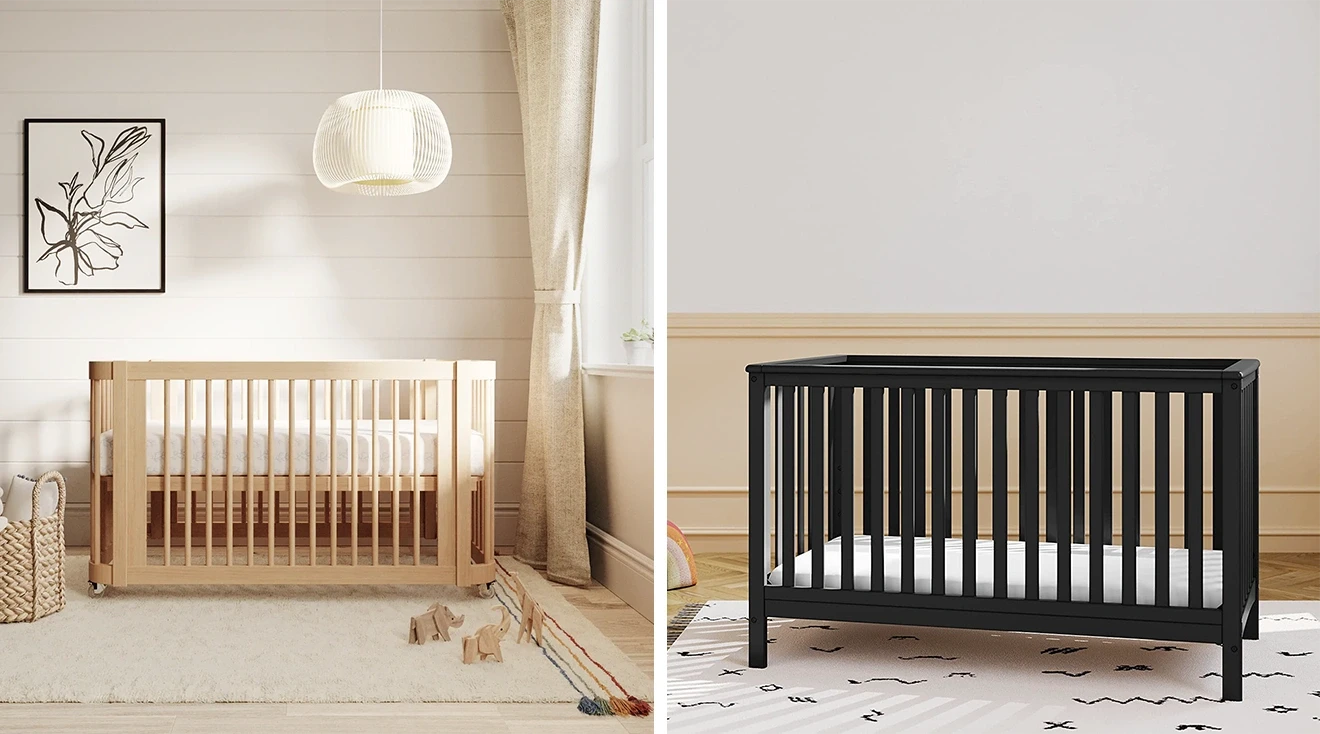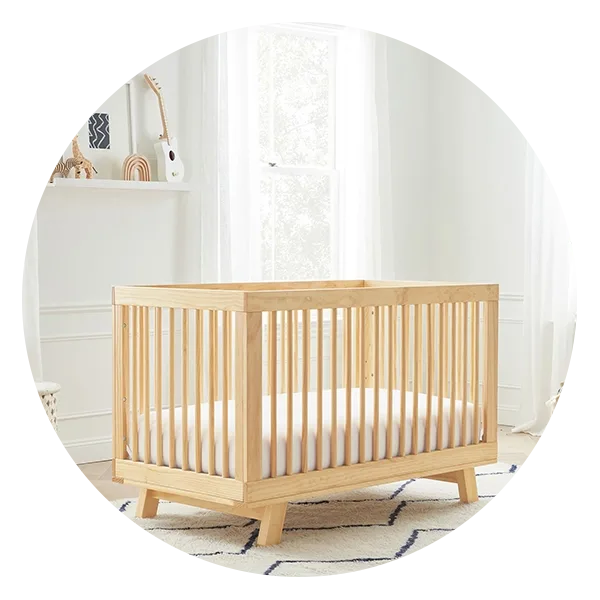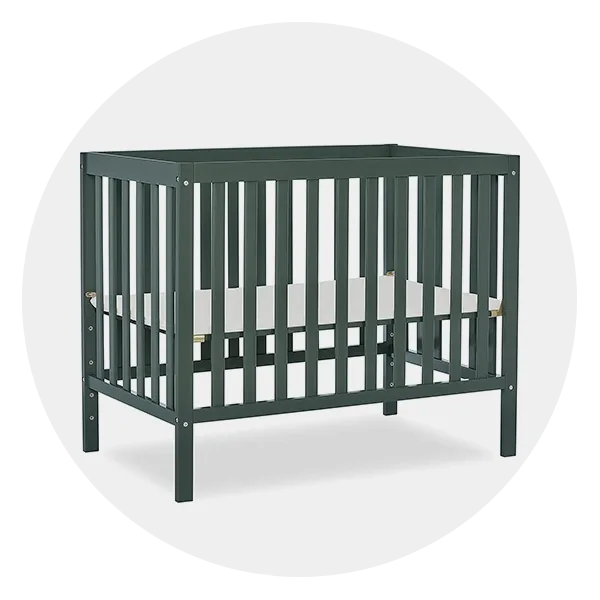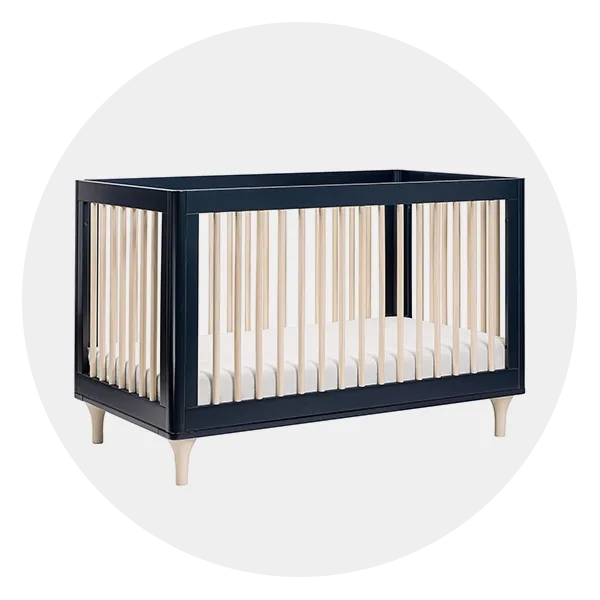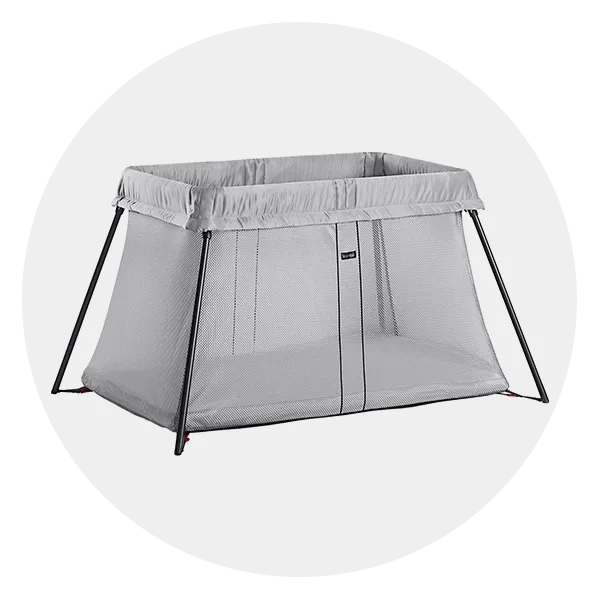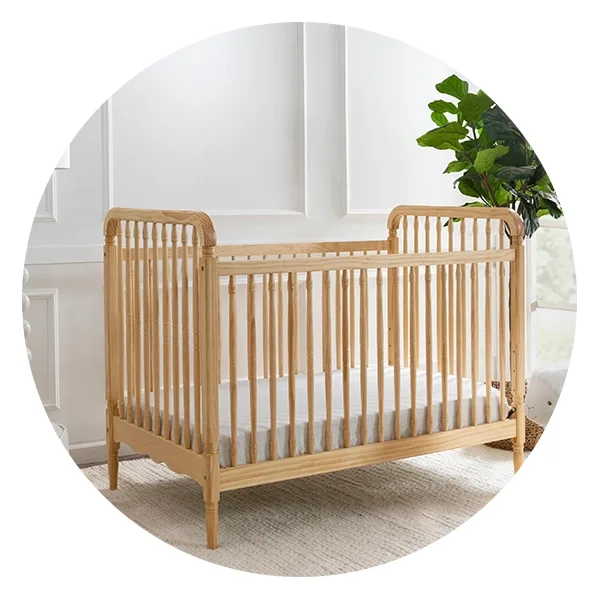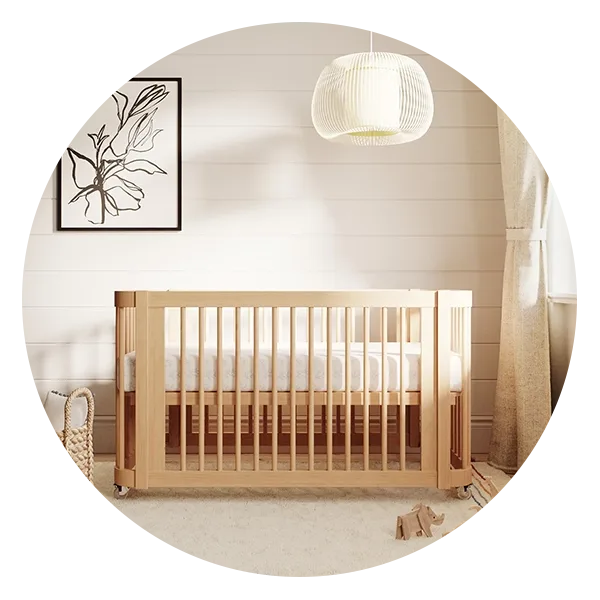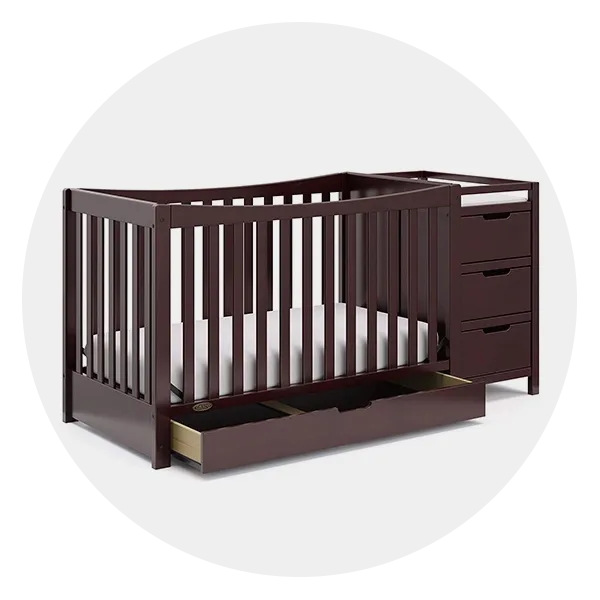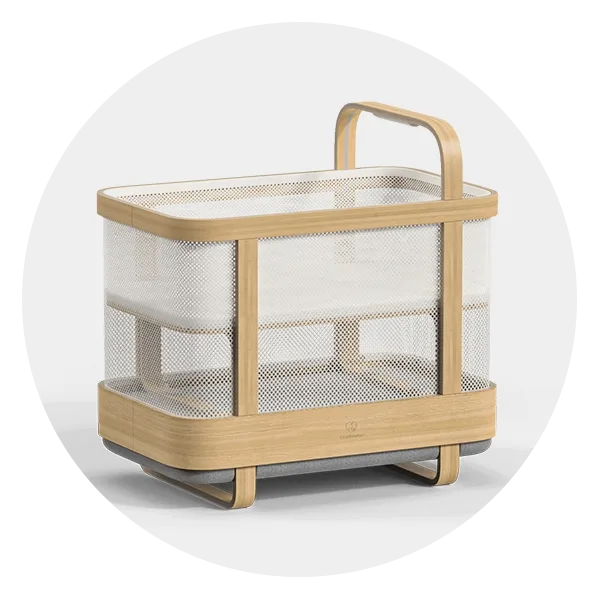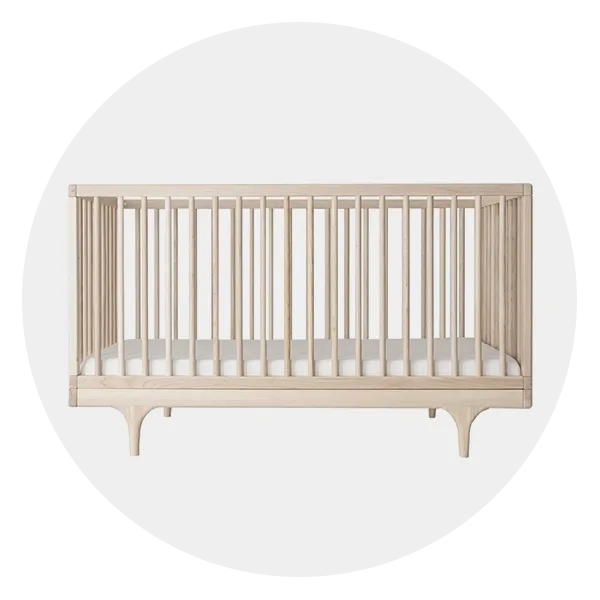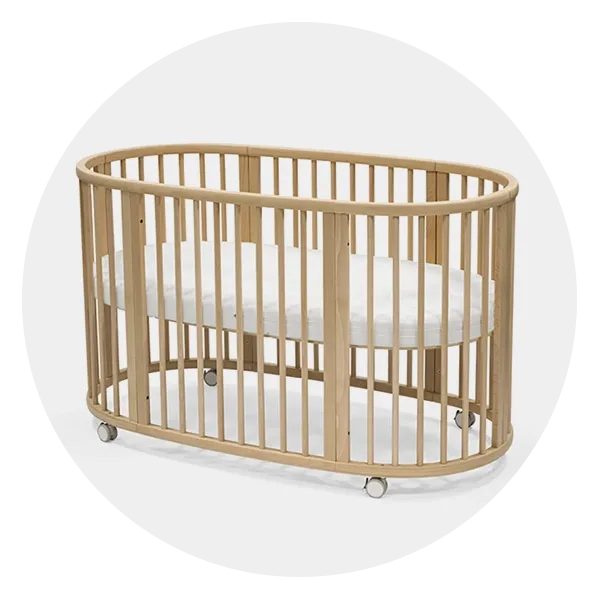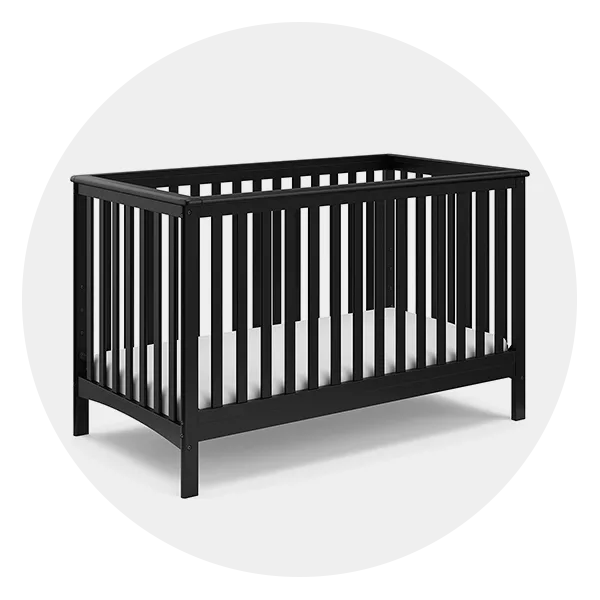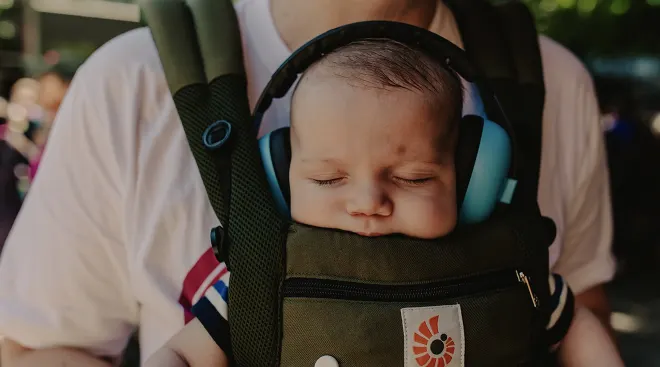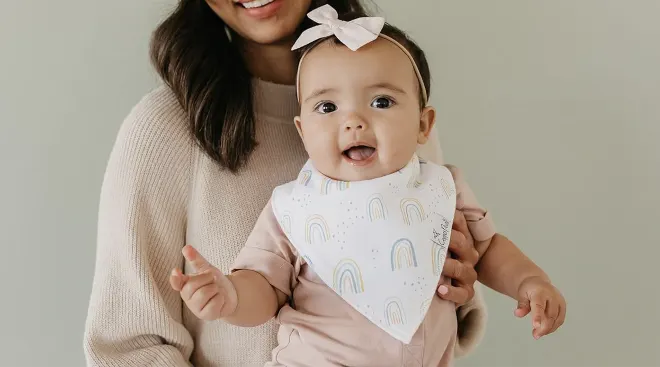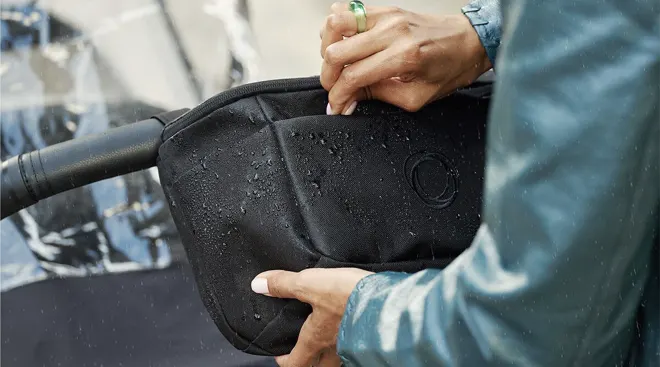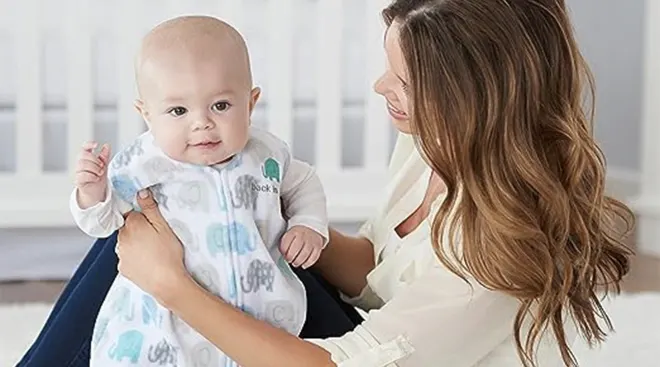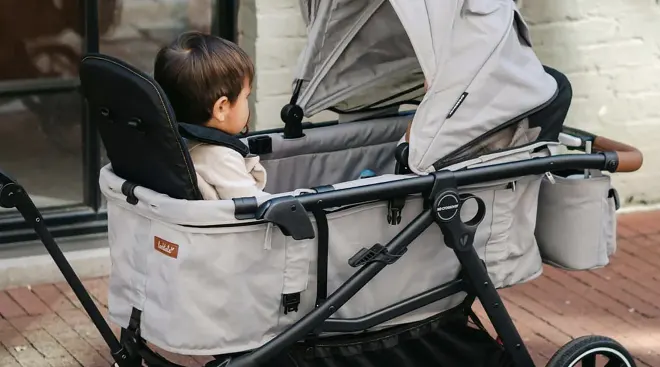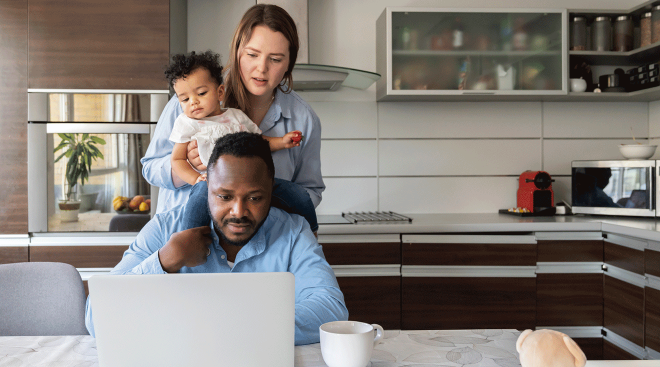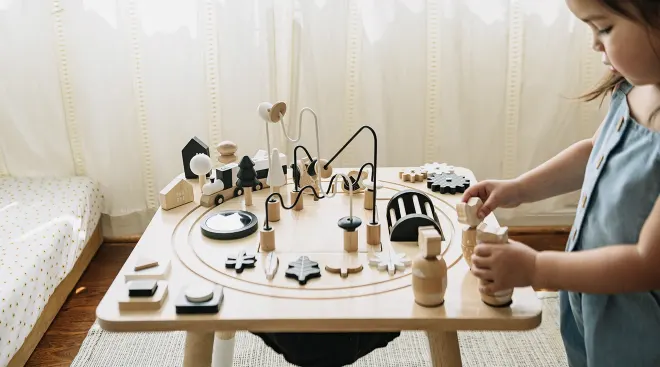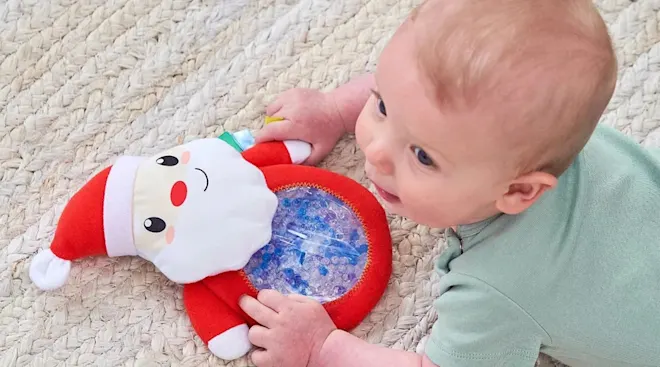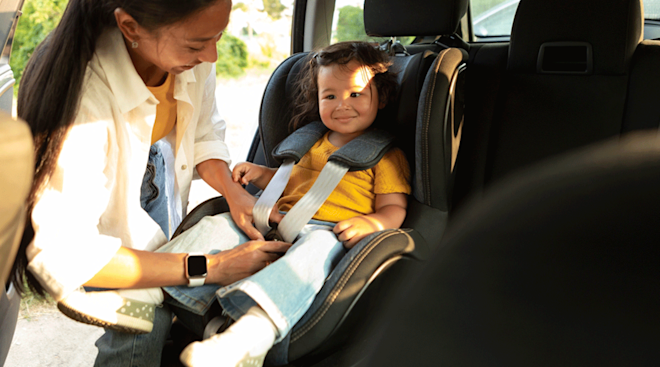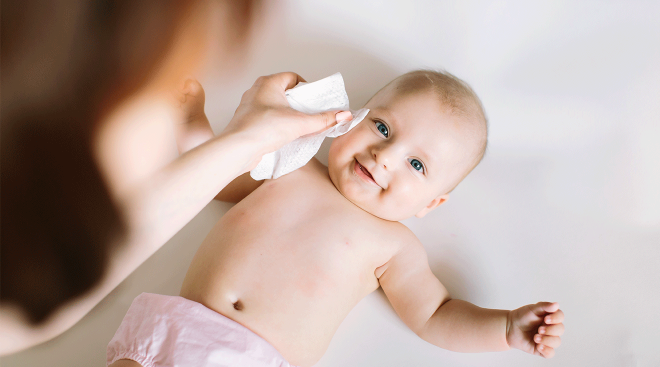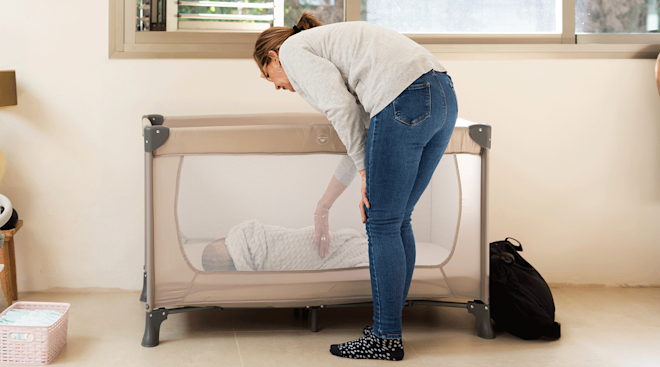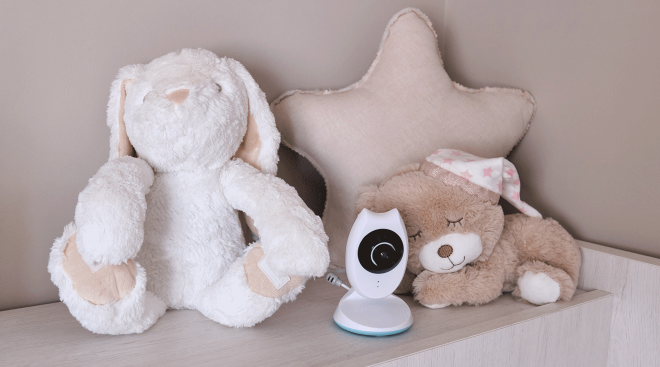The Best Baby Cribs for All Styles and Budgets
The baby crib: It’s the focal point of your little love’s room, and the spot where your child will—fingers crossed—clock in hours of uninterrupted sleep (we can dream, right?). It’s no wonder then that parents spend weeks, if not months, taking measurements, reviewing safety guidelines, browsing scores of options and poring over customer reviews to find the best baby cribs. It’s enough to make you want to take a nap! Don’t worry, we’re here to help take the tedium out of this task. Below, expert tips to help you create a safe sleep environment for baby, plus our picks of the best cribs on the market to suit every style and budget.
There’s a lot to consider when investing in a baby crib. To streamline the decision-making process, keep the following factors in mind:
-
Safety. The safest baby cribs are the newest baby cribs. Options on the market today adhere to more rigorous federal safety standards than in years past, offering durable wooden slats and stronger crib hardware to prevent loose parts. Look for baby cribs that meet CPSC (Consumer Product Safety Commission) requirements or have the JPMA (Juvenile Products Manufacturers Association) seal of approval. If you’re using a hand-me-down from an older sibling, check to make sure it hasn’t been recalled.
-
Convenience. Consider baby crib brands or retailers that make sense for you, whether that means being able to drive up and load the bed into your car or having it delivered to your door. Most importantly, when researching the best cribs, be sure that the one you have your eye on doesn’t have to be special-ordered or have a long waiting period (unless you’re absolutely certain you have that luxury of time).
-
Budget. It’s not just about the cost of the baby crib. You’ll also need to budget for a crib mattress as well, which can run about $100 to $500.
-
Add-ons. Purchase the accompanying toddler rail or conversion kit now if you know you plan on converting your baby crib to a toddler bed in a few years. It’s better to have it on hand than to find out down the line that the model you have has been discontinued.
-
Bedding. You don’t need anything beyond a fitted crib sheet for baby cribs. While a matching crib skirt is optional as a decorative touch, skip the bumpers, quilts and pillows, which pose safety hazards.
Finding a baby crib that aligns with your unique needs is only half of the process—you’ll then want to make sure it’s set up and used safely. This way, you can create a sleeping spot for baby, that’s comfy, dreamy and secure. Below, find safety tips to keep top of mind:
-
Age. Depending on your preferences, baby can use a crib from the time they come home from the hospital. If you start off with a bassinet, be sure to transition your infant to a crib when they physically outgrow the space, show signs of rolling over or sitting up or are around the three-month mark, advises Jillian Thistel, a certified pediatric sleep consultant and founder of Twinkling Stars Pediatric Sleep Consulting in Ontario, Canada. As your tot approaches the age of 3, they’ll probably be ready for a toddler bed. Keep in mind: Each child develops at a different pace, so make the decision when it feels right for you and your little one, or when they physically outgrow their crib to avoid safety risks.
-
Setup. First and foremost, follow the instructions given by the manufacturer to ensure the crib is assembled correctly (without any loose screws or bolts!), says Thistel. If you lose any parts, such as screws and washers (because pregnancy brain!), don’t improvise. Instead, call the company and ask for replacements; the customer rep should be happy to provide them. Most importantly, remember to assemble your baby crib in the room you plan to use it in—you don’t want to learn the hard way that it won’t fit through the door!
-
Placement. Avoid placing their child’s crib near any outlets; furniture that could be a potential safety hazard; windows with blinds, cords or strings or walls with frames or hanging decor that could fall—the same goes for mobiles that attach to or hang over the bed. For baby’s comfort, the crib also shouldn’t be placed where direct sunlight hits, notes Thistel.
-
Bedding. Make sure you’re up to date on all safe sleep guidelines from the American Academy of Pediatrics (AAP). For starters, when making your infant’s bed, use a fitted sheet only—nothing else should be in the crib with baby. Moreover, there shouldn’t be any gaps between the mattress and the bed. Once baby reaches their first birthday, you can introduce a small lovey, says Thistel, but the bed remain free of bumpers, pillows, loose bedding and anything else that could pose a suffocation risk.
-
Mattress height. Most modern cribs feature adjustable mattress height settings that adapt to your child’s changing needs. Thistle advises parents to lower the crib’s mattress height when baby shows signs of sitting up independently, rolling over or getting up onto their hands and knees.
The best baby cribs not only look good, but also grow with your child and offer a host of features to meet their changing needs. Ready to shop the options? Just try not to get sleep envy as you take a look at our picks for the best cribs below.
Overall best baby crib
- 3-in-1 design is suitable for newborns to 4-year-olds
- Versatile, modern design available in several colors
- Comes with a toddler conversion kit
- CPSC-certified
- Some reviewers say the actual color differs from photos
What’s not to love about Babyletto’s Hudson 3-in-1 Convertible Crib? It’s made of Greenguard Gold-certified materials and sits on sturdy legs, making us inclined to list it among the safest cribs too. Reviewers say it takes only about a half an hour to an hour to build, with beautiful results. It’s available in variations of white, gray, espresso and natural pine wood, so it easily fits into a modern nursery or a traditional room.
Specs at a glance:
- Holds up to 50 pounds
- Measures 34.88” x 29.62” x 53.62”
- Weighs 54 lbs.
- Made from sustainable pine wood
Best mini crib
- 4-in-1 crib, comes with a mattress pad
- Parents say it doesn’t take long to assemble
- Available in several chic colors
- CPSC- and JPMA-certified
- Rails for twin-sized bed conversion sold separately
On the hunt for a baby bed with a narrow footprint? Look no further than this top-notch mini crib. Its small stature makes it perfect for room sharing with baby (which the AAP recommends for at least the first six months), or for those in need of a space-saving solution. The 4-in-1 crib can even be converted into a small daybed or a twin-sized bed as your child gets older. What’s more, it comes in several chic colors, like olive, cool gray and dusty blue.
Specs at a glance:
- Holds up to 50 pounds
- Measures 39” x 28” x 37”
- Weighs 40 lbs.
- Made from solid pinewood
Best convertible crib
- 3-in-1 design, comes with a toddler bed conversion kit
- Parents say it’s easy to assemble
- CPSC-certified
- Reviewers say it doesn’t fit through average-sized door frames; be sure to assemble this crib in the room where it will be used
A convertible crib is ideal for parents looking for a sleep spot that will grow with their child through several stages. This modern design does just that. It transitions from a crib to a toddler bed to a daybed, and comes with a conversion kit for your convenience. Choose from several modern hues, all finished in non-toxic paint that’s lead- and phthalate-free.
Specs at a glance:
- Holds up to 50 pounds
- Measures 53.5” x 29.75” x 35”
- Weighs 55.1 lbs.
- Made from sustainable pine wood
Best portable crib
- Lightweight design
- Mesh sides allow you to easily supervise baby
- Comes with a convenient carrying case
- JPMA-certified
- Reviewers say the mattress is thinner than expected
- Mattress only works with sheets from Baby Bjorn
Pop it open and lay baby down! BabyBjorn’s Travel Crib is a great solution for nights spent at hotels or a relative’s house. The light design weighs in at a mere 13 lbs., and it comes with a carry case to make packing (and unpacking) a breeze. Another top selling point is the vented sides that make it easy to see what your little one is up to in there. For safety, use only the mattress that this portable crib comes with. This travel crib has no upper weight limit but should stop being used by your little sleepyhead when they reach the three-year mark or they’re able to climb out of the bed themselves—whichever comes first.
Specs at a glance:
- No upper weight limit
- Measures 44" x 25" x 32"
- Weighs 13 lbs.
- Made from polyester and steel
Best wooden crib
- 3-in-1 crib, comes with a toddler bed conversion kit
- Reviewers say it’s sturdy and easy to assemble
- Modern take on a vintage-inspired design
- CPSC-certified
- Daybed conversion kit and mattress sold separately
A wooden crib is a classic for a reason. The timeless design is given an update in this convertible crib, which seamlessly combines vintage-inspired and modern aesthetics. It consists of a sturdy frame and thick spindles—plus, the 3-in-1 crib will last your little one through toddlerhood. Better yet, this pick is made from 100 percent sustainably sourced pine wood, is Greenguard Gold-certified and features hidden hardware construction, ensuring a safe sleep environment for baby.
Specs at a glance:
- Holds up to 50 pounds
- Measures 44” x 55” x 30.5”
- Weighs 44 lbs.
- Made from sustainable pine wood
Best 3-in-1 crib
- Three adjustable mattress heights
- Comes with full crib and toddler bed conversion kits
- CPSC- and JPMA-certified
- Mattress sold separately
- Each crib is made to order, so shipping takes several weeks
We get it—baby gear can get expensive, which is why we love multi-purpose designs that last for years. Take this 3-in-1 crib from Nestig, for example. Its simple, attractive shape is inspired by the ocean’s organic movement, and works as a mini crib, a full crib and a toddler bed. Thanks to its lockable wheels, you’ll be able to move it from room to room with ease.
Specs at a glance:
- Holds up to 50 pounds
- Mini crib measures 24.5” x 31” x 31.5”; full crib measures 31” x 53.5” x 31.5”; toddler bed measures 31” x 53.5” x 29”
- Made from sustainable pine wood
Best baby crib with changing table
- 4-in-1 design converts from a crib to a full-sized bed
- Features five drawers and two shelves for ample storage
- JPMA-certified
- Conversion kits and mattress sold separately
- Heavier than other crib types
Save on space by opting for a baby crib with changing table, like this pick. The classic design is made from pine wood, and offers a safe sleep spot for baby from their newborn days right through adulthood—seriously, it converts into a full-size bed with a headboard. On its side, you’ll find a convenient changing table with three drawers and two open shelves—plus, there are even two extra storage compartments under the bed for added convenience.
Specs at a glance:
- Holds up to 50 pounds (as a crib and toddler bed)
- Measures 71.77" x 29.53" x 35.94"
- Weighs 105 lbs.
- Made from pine wood
Best smart crib
- Equipped with smart technology to soothe baby and a built-in monitor
- Connect to your smartphone for live video and audio at any time
- Comes with a bassinet attachment
- JPMA-certified
- Not suitable for children older than 24 months, or weighing more than 33 pounds
- High price point
You may have heard of a smart bassinet, but what about a smart crib? These high-tech baby beds offer plenty of bells and whistles, all in a stylish design—just like this option from Cradlewise. During your little love’s first months at home, use the bassinet feature, then seamlessly transition it into a crib as they get older. Best of all? This baby crib comes equipped with a built-in monitor that detects when your little one is stirring and responds with gentle movements to soothe them back to sleep. You can even connect this smart crib to your phone for a live video or audio stream at any time, day or night. It’s no wonder this option is a Best of Baby award-winner!
Specs at a glance:
- Holds up to 33 pounds
- Measures 40” x 25” x 42”
- Weighs 88.2 lbs.
Best luxury baby crib
- 3-in-1 design
- Two adjustable mattress heights
- Elegant, contemporary look
- Daybed conversion kit sold separately
Next up on our list of the best cribs for babies is this luxurious option. Simply elegant, the modern crib is made from solid European Ash wood, lending to its aesthetically pleasing look. Its minimalist spindles offer visibility on all four sides, so you can supervise your little sleeping beauty with ease. What’s more, it easily converts into a toddler bed, a daybed or even a sofa, so it can be a staple in your home for years to come.
Specs at a glance:
- Measures 54.5” x 30” x 34”
- Made from solid European Ash wood
Best round baby crib
- 3-in-1 design suitable for newborns to 5-year-olds; no conversion kit needed
- Lockable swivel wheels
- CPSC-certified
- Avoid using a microfiber cloth or household detergents when cleaning
Prefer a design that’s a bit different than the rest? Opt for this chic round baby crib from Stokke. Your child can use this beech wood bed from their first days at home up until their fifth birthday, thanks to its versatile 3-in-1 design. Plus, it’s equipped with wheels that lock for added convenience and safety. Choose from three natural colorways to complete your dream nursery.
Specs at a glance:
- Holds up to 120 pounds
- Measures 55.5” x 29.1” x 34.3”
- Weighs 43.7 lbs.
- Made from beech wood
Best modern baby crib
- 4-in-1 design comes with toddler, daybed and sofa guardrail
- Features acrylic spindles for optimal availability
- JPMA-certified
- Mattress sold separately
- Reviewers say assembly isn’t as straightforward as they anticipated
Ultra-modern see-through baby crib models are all the rage. Adopt the stylish look without the hefty price tag, thanks to this convertible crib option. The 4-in-1 baby bed works as a crib, a toddler bed, a daybed and a sofa, so it will adapt to your family’s changing needs over the years. It even has three adjustable height positions to ensure your little one is safe and comfy.
Specs at a glance:
- Holds up to 50 pounds
- Measures 54.5” x 30.25” x 34”
- Weighs 76 lbs.
- Made from sustainable pine wood and acrylic
Best affordable baby crib
- 4-in-1 design with three adjustable mattress heights
- Reviewers say assembly is simple
- JPMA-certified
- Affordable price point
- Daybed conversion kit sold separately
Creating an adorable nursery for your child doesn’t have to cost a small fortune. Case in point: This affordable baby crib. Made from pine wood, it offers a sturdy (and aesthetically pleasing) sleep space for baby—plus, thanks to its 4-in-1 design, it’ll last your child for years to come. Best of all, it rings in at just under $150.
Specs at a glance:
- Holds up to 50 pounds
- Measures 30.71” x 54.73” x 34”
- Weighs 41.2 lbs.
- Made from pine wood
About the experts:
Jillian Thistel is a certified pediatric sleep consultant based in Ontario, Canada. She is a member of the Association of Professional Sleep Consultants and the founder of Twinkling Stars Pediatric Sleep Consulting.
Plus, more from The Bump:
Navigate forward to interact with the calendar and select a date. Press the question mark key to get the keyboard shortcuts for changing dates.

































